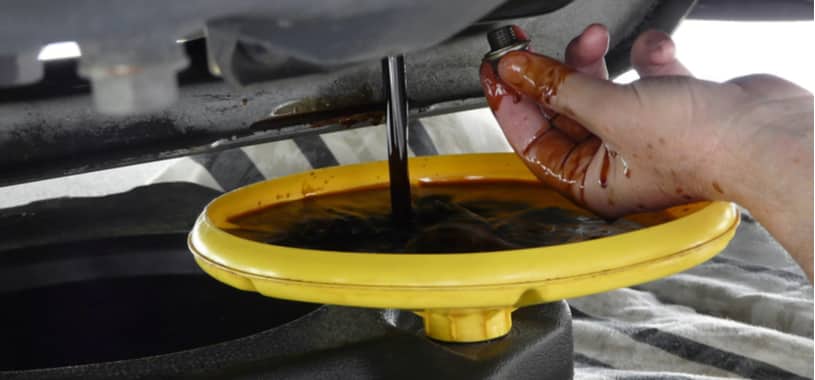How to change an engine oil filter
In need of a new oil filter?
The engine oil filter is a critical component in your car. It prevents severe engine damage by keeping harmful contaminants from circulating the system. To continue performing as needed, filters must be changed routinely to prevent clogging. Clogging results in poor oil flow and contaminants escaping into the system. This can affect performance and reduce the engine’s life span.
The oil itself is used as a lubricant to prevent friction. Friction, or grinding between metallic parts, wears the parts down and will severely damage the engine. Grinding may cause it to seize or stall, resulting in the possibility of complete engine failure. To avoid reduced performance or even a failed engine, it’s best to maintain your car as advised over time. That includes the engine oil and filter as recommended by your servicing schedule or owner’s manual. Natrad has a range of oil filters suited to a large variety of vehicles. Need to replace? Nip into one of your nearest Natrad stores today.
How to change an engine oil filter
Changing an oil filter can be tricky, as you’ll need to elevate the car to do it. If you don’t feel confident, nip into your nearest Natrad where a qualified technician can help you out. Natrad can also supply the right oil filter for you and install it. If you are feeling confident, read on for a guide on how to best tackle the project.
Tools and tips on changing your oil filter

- Oil filter
- Oil filter wrench set
- Socket wrench
- Oil drain pan or container
- New engine oil
- Engine oil flush (optional)
- Funnel
- Jack and axle stands or ramps
- Work gloves
- New drain plug gasket (check if owner’s manual advises this before starting)
- Your owner’s manual
If you’re unsure where to locate these tools, your local Natrad workshop can advise.
What oil filter do I need?
If you can’t find an exact replacement filter, you might be unsure what to look for. You can read our article here about how to select the right oil filter for your car. The specialists at Natrad have a range of filters and can advise what options are available to you.
How often should I change my oil filter?
You should change your oil filter at least every second time you change your engine oil, typically every 15,000 kilometres or as recommended by your vehicle manufacturer. For most modern vehicles, this aligns with regular oil change intervals. If you drive in harsh conditions, such as heavy traffic, extreme temperatures, or off-road environments, you may need to replace the oil filter more frequently. Regularly changing the oil filter ensures clean oil circulates through your engine, preventing premature wear and costly repairs.
Step-by-step instructions on how to change your oil filter
You’ll first need to remove old engine oil before replacing the filter. This helps extend the filter life and ensure it is not contaminated with sludge or build-up right after installation. To make things easier, one thing you can do from the get-go is to quickly warm up your oil. This can be done by running your car for a few minutes or until the temperature gauge just begins moving, which allows the oil to flow better. If you’re so inclined, you can use an engine oil flush during this time to help clean the system before adding new oil. Run the engine for the time suggested on the bottle, then allow the oil to cool slightly before commencing. If the oil is hotter than you expect, make sure to wear safety gear like work gloves and safety glasses! Not doing so may result in severe burns. Follow these steps:
1. Elevate your car
It’s all up from here! First, find a flat level area to elevate the car. You can then raise it either by driving onto ramps, using jack stands or a hydraulic floor jack. When using jacks, make sure the car is in park (or first gear in a manual) before lifting. For easier access to the filter, it’s a good idea to use four jack stands, one on each corner of the car. Make sure they are secure before going underneath. You can check your owner’s manual for advice on where to best place the jacks.
2. Locate the drain plug
Your owner’s manual will be a lifesaver during this process. You can also consult it to locate the oil drain plug and then place the oil drain pan below it. Be aware that the oil could flow at an angle, so position the drain pan accordingly. You’ll need to loosen the plug with a socket wrench, then unscrew the rest by hand.
3. Drain the oil
Allow all the old oil to drain and then return the plug to its spot. Tighten with your hand and then secure with the socket wrench, making sure not to overtighten. Your owner’s manual may indicate using a new drain plug or seal. It’s best to check if this is the case before starting the oil filter replacement process. If so, place it onto the drain plug and tighten it.

4, Remove the old oil filter
Now you can move on to changing over the oil filter. To remove the existing one, place the oil drain pan underneath to catch any stray oil. Unscrew the filter and try to keep it upright to avoid excess spillage from inside. You can then dispose of the old filter.
5. Install the new oil filter
Before screwing on the new filter, make sure to lightly grease the seal with clean oil. This helps prevent binding. Place the new filter on as recommended by vehicle specifications.
6. Fill up with clean oil
Once this has been completed and everything is securely in place, you can begin refilling the engine oil. Use a funnel to help prevent spillage and fill to the correct specifications. This can be found in your owner’s manual. Overfilling the oil can be harmful to your engine.
7. Run the engine and check for leaks
Once you’ve filled up, turn on the car and see if it is running smoothly. Check for any leaks near the drain plug and oil filter and ensure everything is sealed properly. If there is a leak, turn off the car and fix it as needed. Check the oil level with the dipstick, lower the car, and you’re good to go!
Benefits of changing an oil filter
A clean oil filter effectively removes contaminants, such as dirt, debris, and metal particles, preventing them from circulating through your engine. This ensures the oil stays clean, reducing engine wear, improving lubrication, and enhancing fuel efficiency. Over time, a clogged oil filter can lead to poor engine performance, increased friction, and even costly repairs. By replacing the oil filter during routine maintenance, you extend your engine’s lifespan and keep your vehicle running smoothly.
Get your oil filter changed at Natrad
If you’re feeling stuck during this process, Natrad has a network of stores across Australia that can help. There is a large high-quality range of oil filters to choose from and our qualified technicians can install them into your vehicle as needed.









